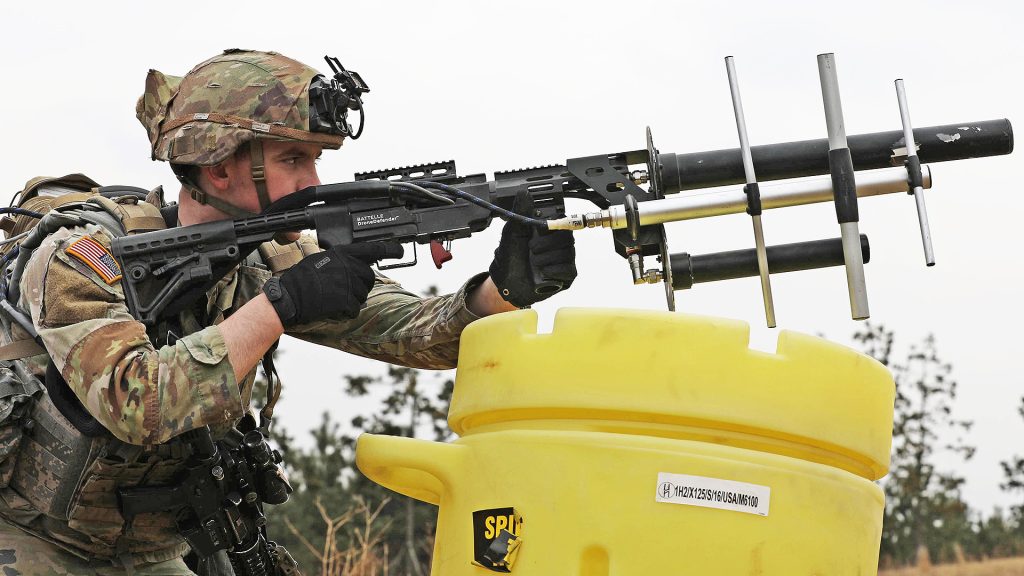The Growing Threat of Drones and the U.S. Response
The rise of drone technology has shifted the landscape of military strategy dramatically over the past decade. U.S. Defense Secretary Pete Hegseth has been vocal about the increasing threat posed by small drones, both domestically and internationally. With this in mind, he recently announced the establishment of a new task force, Joint Interagency Task Force 401 (JIATF 401), aimed at accelerating the development and procurement of counter-small unmanned aerial systems (C-sUAS).
The Nature of the Threat
Hegseth highlighted that the risks associated with hostile drones are growing exponentially. These drones are not merely tools for observation; they can inflict harm on military personnel, damage infrastructure, and challenge national sovereignty. The increasing sophistication of drone technology means these threats can emerge from unexpected quarters, whether on the battlefield in a foreign country or at a sensitive military installation back home.
Past incidents demonstrate this escalating danger. Reports of unidentified drones swarming locations like Langley Air Force Base and various installations across England have raised serious concerns. Additionally, drone incursions have occurred at Wright-Patterson Air Force Base, Picatinny Arsenal, and others, which underline the vulnerability of U.S. military assets.
Establishment of JIATF 401
In a bid to counter these growing challenges, Hegseth has replaced the previous Joint Counter-small Unmanned Aircraft Systems Office (JCO) with JIATF 401. This new task force is designed to streamline operations and improve the speed at which counter-drone technologies can be developed and deployed.
JIATF 401 will not only spearhead efforts to enhance C-sUAS capabilities but will also consolidate research and development efforts across various DoD entities. This includes the significant authority to allocate up to $50 million in funding for specific initiatives, allowing quicker deployment of promising technologies.
Focus on Emerging Technologies
One of the key roles of JIATF 401 will be the integration of emerging counter-drone technologies. Although Hegseth’s memo did not specify which systems would be prioritized, it indicates a focus on developing ‘soft-kill’ options like electronic warfare and cyber measures, rather than kinetic solutions like lasers or missiles. These decisions arise from existing legal and regulatory constraints related to domestic drone defense, which complicate the military’s ability to deploy aggressive countermeasures within U.S. borders.
The establishment of the Joint Counter-small Unmanned Aircraft Systems University is also part of this initiative. Located at Fort Sill, this institution aims to educate military leaders on counter-drone strategies, ensuring that the armed forces are well-equipped to navigate this new threat landscape.
Regulatory and Operational Challenges
Yet, while the directive to form JIATF 401 represents a proactive approach, significant regulatory barriers still hinder effective drone defense. Current U.S. laws limit the military’s engagement capabilities with drones, requiring a delicate balance between security and public safety concerns. The complexities of operating in non-combat zones abroad also complicate the deployment of counter-drone technologies, often subject to host nation rules and sensitivities.
General Gregory M. Guillot, commander of U.S. Northern Command (NORTHCOM), has indicated a desire to revise these limitations. His advocacy for changes to Title 10 of the U.S. Code, particularly regarding anti-drone authority, underscores the urgency of addressing gaps in current regulations. Expanding the military’s ability to counter drone threats beyond installation boundaries would enhance operational readiness and facilitate quicker responses to threats as they arise.
A Multi-Dimensional Threat
The drone issue transcends mere military tactics. Current conflicts serve as a demonstration of how drones have become essential tools for surveillance and engagement. Countries such as Ukraine and Russia have showcased their effectiveness in warfare, with drones becoming central to modern combat. U.S. forces have also encountered increasing numbers of surveillance drones, complicating the operational landscape for military personnel in various theaters.
As technology continues to evolve, drones are becoming increasingly versatile. Instances of drone swarms harassing naval vessels and violating restricted airspace highlight the multitude of applications this technology can have. It also presents an ongoing challenge for military strategists as they adapt to incorporate counter-drone systems effectively.
Moving Forward with JIATF 401
While JIATF 401 has a clear mandate, its success hinges on collaboration across various military branches and governmental agencies. The establishment of a training range and the recruitment of specialized personnel will be critical steps in making this initiative a reality. The task force will have a review period of 36 months to assess its impact and sustainability, signaling both a calculated risk and a determined effort to fortify national security against evolving drone threats.
Hegseth’s initiative to form JIATF 401 is a response to a complex landscape defined by rapid technological advancements and changing military dynamics. As the armed forces grapple with the multi-dimensional threat posed by drones, the concerted efforts of this new task force will be essential in shaping effective strategies to protect U.S. airspace and ensure military readiness for the challenges of the future.

